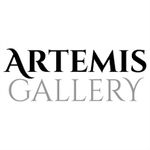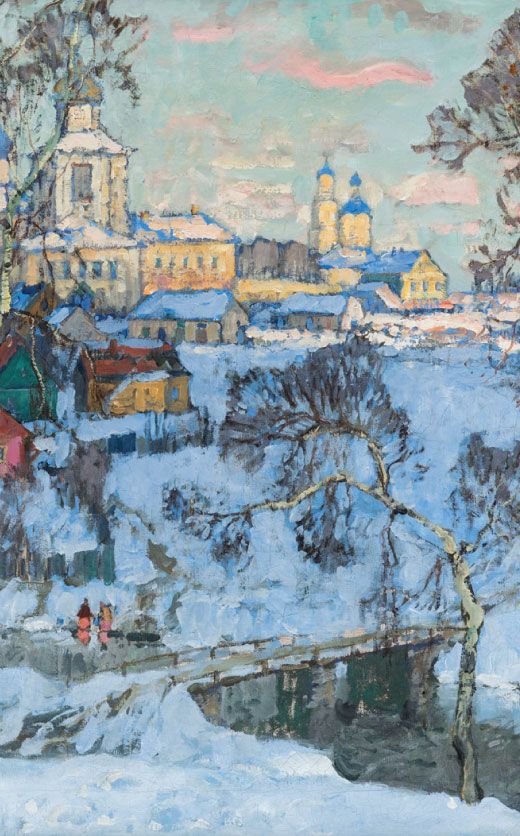Chinese Qing Gilt Wood White Clad Guanyin in Lalitsana
Lot 12a
About Seller
Artemis Fine Arts
686 S Taylor Ave, Ste 106
Louisville, CO 80027
United States
Selling antiquities, ancient and ethnographic art online since 1993, Artemis Gallery specializes in Classical Antiquities (Egyptian, Greek, Roman, Near Eastern), Asian, Pre-Columbian, African / Tribal / Oceanographic art. Our extensive inventory includes pottery, stone, metal, wood, glass and textil...Read more
Categories
Estimate:
$1,000 - $1,500
Absentee vs Live bid
Two ways to bid:
- Leave a max absentee bid and the platform will bid on your behalf up to your maximum bid during the live auction.
- Bid live during the auction and your bids will be submitted real-time to the auctioneer.
Bid Increments
| Price | Bid Increment |
|---|---|
| $1 | $25 |
About Auction
By Artemis Fine Arts
May 1, 2025
Set Reminder
2025-05-01 10:00:00
2025-05-01 10:00:00
America/New_York
Bidsquare
Bidsquare : Fine Antiquities, Asian, Ethno, Fine Art
https://www.bidsquare.com/auctions/artemis-gallery/fine-antiquities-asian-ethno-fine-art-19334
Showcasing an extraordinary array of artifacts and art, including Egyptian, Greek, Roman, Etruscan, Near Eastern, Asian, Pre-Columbian, Native American, Tribal, Oceanic, Spanish Colonial treasures, fossils, fine and visual arts, and more! All ancient items are ethically sourced and legally available for sale. Enjoy the ease of in-house shipping for a seamless experience! Artemis Fine Arts info@artemisgallery.com
Showcasing an extraordinary array of artifacts and art, including Egyptian, Greek, Roman, Etruscan, Near Eastern, Asian, Pre-Columbian, Native American, Tribal, Oceanic, Spanish Colonial treasures, fossils, fine and visual arts, and more! All ancient items are ethically sourced and legally available for sale. Enjoy the ease of in-house shipping for a seamless experience! Artemis Fine Arts info@artemisgallery.com
- Lot Description
East Asia, China, Qing Dynasty, ca. 18th to 19th century CE. This beautiful and sensitively carved wood Guanyin is the Buddhist Bodhisattva of Compassion in only one of her 33 manifestations. Also called the Goddess of Mercy by Portuguese missionaries in 16th century China, this portrayal is called “White Clad”, “White Hooded,” or “White Robed Guanyin.” The name comes from paintings where her clothing and hood are painted white. While woodcarvings may have a white base to make colors vibrant, they are usually covered with red paint, gilt, and lacquer, making the White Clad name moot here. Chinese lacquer darkens naturally over time and faster if placed on an altar with offerings of candles and incense. She sits here in lalitasana, the posture of royal ease with her left knee up and the right leg bent and lying sideways. Size: 7" W x 14" H (17.8 cm x 35.6 cm); gold quality 23%
Her left hand rests on her knee while the right is placed at her side for stability. She is intricately carved with fine details and sits on a cloth with multiple fold patterns covering the throne. Her hands are delicately carved and skillfully presented, and while her hair is up in a bun, it is covered by the hood that also hangs down her back and covers her shoulders. An open cavity on the rear is missing its cover (bung) and has a red paper script with Chinese characters inside confirming this piece was consecrated by a Buddhist monk. In this manifestation with abundant gilt, Guanyin personifies serene beauty, kindness, and compassion. While the carving is dated 18th century, it has been reset into a base likely dating to the 19th century. The base’s rear has a carved indentation to hold a detachable aureole, which is now missing. The base was made for a statue with an aureole, but this Guanyin may have been originally carved with no aureole in mind. Whatever the case may be, the visual result of this union is wonderful and demonstrates how pieces and even their stands were considered sacred and preserved.
This Guanyin manifestation is called White Clad, White Hooded or White Robed Guanyin. Its description comes from paintings in which her clothing and hood are painted white. Although woodcarvings may have a white base to make colors more vibrant, they are usually covered with red paint, gilt and lacquer, the last of which darkens naturally over time and faster if placed on an altar with offerings of candles and incense.
This striking, beautiful and sensitively carved White Hooded Guanyin sits in lalitsana, the posture of royal ease with her left knee up and the right leg bent and lying sideways. Her left hand rests on her knee while the left is placed at her side for stability. She sits on a backless rocky throne and her slightly downcast head with lowered eyes is portrayed as very calm and serene. The statue is intricately carved fine details. She sits on a cloth with multiple fold patterns covering the throne, and her hands delicately carved and skillfully presented. Although her hair is up in a bun, it is covered by the hood that also hangs down her back and covers her shoulders. There is an open cavity on the back missing its cover (bung) with a red paper script with Chinese characters inside confirming this piece was consecrated by a Buddhist monk. The piece has gilt throughout, and in this manifestation, Guanyin personifies serene beauty and compassion. While the carving is dated 18th century, it has been reset into a base probably dating to the 19th century. Although the base’s back has a carved indentation to receive a detachable aureole now missing, this Guanyin may have been originally carved without an aureole in mind. Whatever the case may be, the visual result of this union is quite nice and demonstrates how pieces and even their stands were considered sacred and were preserved for a long period of time.
Provenance: private Los Angeles, California, USA collection
All items legal to buy/sell under U.S. Statute covering cultural patrimony Code 2600, CHAPTER 14, and are guaranteed to be as described or your money back.
A Certificate of Authenticity will accompany all winning bids.
We ship worldwide and handle all shipping in-house for your convenience.
SHIPPING EXCEPTIONS: Due to customs clearance issues, we are unable to ship to Germany, Switzerland and Australia. If you live in Germany, Switzerland or Australia, you will need to provide an alternate shipping destination, or we will not be able to complete your purchase. In addition, please note that we are unable to ship ancient items back to the original country of origin (Egyptian to Egypt, Greek to Greece, etc.)
PAYMENT EXCEPTION: Unless a known customer of Artemis, payment for all gold / precious metal / gem lots must be made via Bank Wire Transfer or Certified Bank Check/Money Order, no exceptions.
#192323Note this has lead and mercury in the pigment. Red pedestal base is not original but also antique and attached to the statue with adhesive. Not easily discernable unless looking at the underside. Fading and losses to gilt and pigments as shown. Stable pressure fissure in the pedestal. Chips and abrasions. Niche has several paper prayers, the papers are old and crumpled with some holes and tears. Most are too delicate to unfold.Condition
- Shipping Info
-
All shipping is handled in-house for your convenience. Your invoice from Artemis Gallery will include shipping calculation instructions. If in doubt, please inquire BEFORE bidding for estimated shipping costs for individual items.
-
- Buyer's Premium



 EUR
EUR CAD
CAD AUD
AUD GBP
GBP MXN
MXN HKD
HKD CNY
CNY MYR
MYR SEK
SEK SGD
SGD CHF
CHF THB
THB














